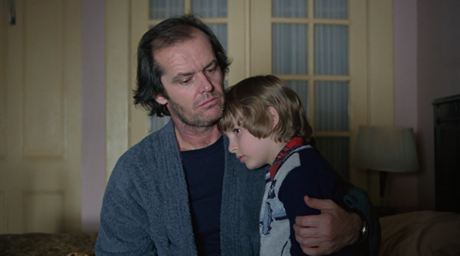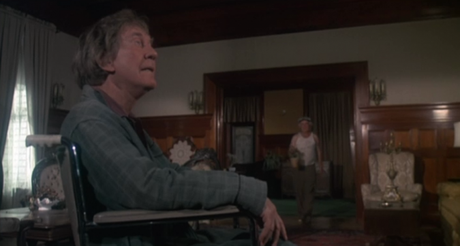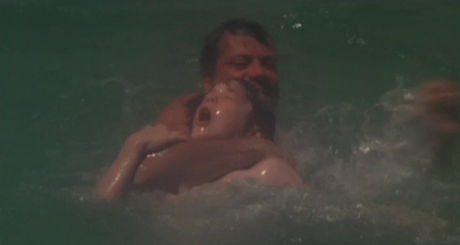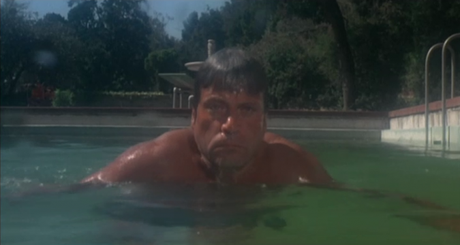There’s a very particular moment in The Shining (1980) that frightened me the most—a moment that was never parodied because it whispered in comparison to the bizarre, visceral horrors of the rest of the film. But there is a moment, a few minutes, where Jack Nicholson sits his son (Torrance) down on the bed and explains to him in a calm, measured voice how much he loves him and that he would never do anything to hurt him. Of course, for anyone who’s vaguely aware of the rest of the plot, we know this is bunk, but the slow, creeping horror of the moment comes from the betrayal, distrust and subversion of the familial relationship, the sacred father/son bond.

Likewise, the most interesting (in some ways, the only successful) moment in 1976’s Burnt Offerings comes in a moment of affection transmuted into attempted murder. Burnt Offerings, based on a 1973 novel of the same name, is a pretty standard haunted house affair. A small family agrees to care take for a beautiful but dilapidated house as well as the old woman who lives upstairs and never comes down (red flag #1). The delightful and all-too-brief appearance of Burgess Meredith as the home’s owner spices up the film’s first half, but soon after the story begins to seriously drag. The cast is spectacular, with the excellent Karen Black leading a red-faced Oliver Reed and Bette Davis giving a damn good turn as the pair’s sassy aunt. It is unfortunate the cast isn’t given a more stream-lined script or, frankly, more to do.

Burgess Meredith as 'Brother'
Vaguely creepy things happen, like plants or bricks regenerating themselves from their decrepit state, albeit none of these things make too much sense or build any atmosphere. Black becomes obsessed with the house and a music-box song plays whenever we’re supposed to be frightened of this obsession, which really isn’t all that frightening or unusual. She’s stuck in the house, after all, without much to do except clean (which Reed makes clear is her woman’s work). Crazy Aunt Bette Davis gets inexplicably sick, and Reed blames the illness on the house, but Black’s lack of sympathy for either of them is what frightens him most. By the end of the film, we’re meant to feel as if the house itself has possessed Black, putting her family in danger.
The singular moment worth speaking about, and the redeeming scene of the film, occurs in the back swimming pool. Reed plays with his son (who had previously emasculated him while they were setting up the pool) picking the boy up and flipping him into the water. What begins as a playful, affectionate moment, however, slowly turns into a horrifying display of power. Reed grabs his son and shoves him under water repeatedly, holding him down, lifting him up, slamming him back and even putting him into a choke hold as the boy tries to scream. Over and over the son tries to get away and is always dragged back, like a seal into a shark’s jaws. Reed is so big, he’s so much stronger than the small boy, and in that moment their pure physicality becomes starkly realized; the son has no possible chance to escape his father.

The scene is horrifying, tense and much more frightening than anything to come in the over-long film. The subversion of the trust and bond between a parent and son, particularly a small child in a vulnerable situation (such as in the deep end of a swimming pool) is what horrifies us, not the implication that the pool has somehow possessed Reed to do this. At the same time, Reed’s inability to stop himself taps into our fundamental fear of inadvertently hurting someone we love. In Reed’s thrashing, there is the film’s only moment of true power, a truly potent force we recognize in ourselves: our own suppressed ability to kill.

This moment is not about plot or character, setting or pacing: it’s about a father trying to kill his son. It’s about an arm around a small throat, a frightening demonstration of power. Burnt Offerings isn’t as good as The Shining in any way whatsoever, but the moments parallel for me, presenting the assumed trust a child places in his father as a false one.

